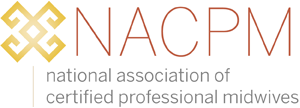If it wasn’t already abundantly clear ,the COVID-19 pandemic is shining a spotlight on the impact structural inequities have on social determinants of health and the disproportionate impact on the health and lives of people of color, especially black and indigenous people. Since economic stability is one of the five social determinants of health, it should be no surprise that the economic shutdown and the mandate for social distancing is drastically impacting our nation’s most vulnerable. While many find ways to balance the privilege and frustration of sheltering in place, many more have no way to stay at home. Some have no home and too many others must negotiate the untenable choice between unemployment or working in jobs that daily expose them to the virus. Disproportionately, this decision has been forced upon marginalized communities, including many of the people we serve.
As CPMs, we are sadly familiar with the uneven impact of health disparities on communities of color but especially on black and indigenous communities. Being black in America means navigating structural racism and we know that the daily experience of racism is in itself is a stress-related health condition with far reaching consequences.The rapid spread of the coronavirus has led to a death toll for African-Americans that is at least two times higher than that of white people. While the coronavirus is novel, health disparities are not a new reality for black Americans. Black Americans are more likely to develop most chronic health conditions than white people, often causing complex and devastating comorbidities with the virus.
*Equity / Equality Image Source: Robert Wood Johnson Foundation. 2017. Visualizing health equity: One size does not fit all infographic. Retrieved from: www.rwjf.org
Since the inception of public health systems in the US, marginalized communities in the United States have persistently been forced to maneuver fragmented access to services, resources and protections. These communities are at higher risk for illness for a myriad of reasons. Indigenous peoples who struggle with high rates of pre-existing health conditions, making them vulnerable to more serious impact of coronavirus infection, are also facing reduced access to testing, PPE, and respiratory equipment. Xenophobia has led to greater hostility among Asian people seeking healthcare services throughout the US. LGBTQIA2S+ peoples are likely to delay treatment due to deep-seated distrust of the medical community based on a history of discriminatory and abusive practices. These realities, coupled with less in-person access to providers with the increased reliance on telehealth, new restrictions on who can accompany the laboring person, and pandemic-imposed social isolation during the postpartum period, are further exacerbating health inequities. Additionally, decreased access to wrap around services such as childbirth education and lactation support, will likely increase the burden already carried by marginalized communities, including those we serve. As the healthcare system’s weaknesses and limitations are exposed by this pandemic, it is also becoming clear that out-of- hospital / community-based alternatives for perinatal care are vital solutions to addressing the comprehensive needs of childbearing families.
We are learning that in this chaos, the community midwife approach to care becomes even more relevant as people and policy makers are actively searching for ways to invest in services that don’t rely on a strained system that was never created to support the health and well being of communities of color. This moment presents an opportunity for CPMs and other community-based midwives to make evident to the world that we are and always have been essential perinatal care providers. Many CPMs, including those who primarily serve communities of color, have reported an increased interest in our model of care. COVID-19 has forced birthing people and the medical community to “get real” about normalizing pregnancy and birth. Overnight, CPMs have come to be recognized as integral to perinatal care systems, and we are demonstrating the tenacity, coordination and skill to meet the urgent needs of our communities.
While the pandemic presents an opportunity to highlight the value of the profession, increasing our client census to meet increased need is not without risk to CPMs and our families. CPMs find ourselves in the precarious position of stepping forward to fill gaps in care while putting our health, as well as that of our families, on the line, all the while having to cope with uncertainty about adequate compensation, lack of access to PPE and appropriate testing. We are proud that many of us are stepping boldly into our newly-recognized role as frontline, essential community health providers. It is our sincere hope that during this time of rapid change, our expertise in physiologic, community-based birth will serve as a beacon to remind birthing people and the medical community that birth is normal and safe.
In these complex times, NACPM strives to elevate and amplify the community of midwifery leaders and people of color-led organizations working to address inequities in perinatal health care. Additionally, we are committed to continuing to provide comprehensive educational tools and resources for clinical practice, including those specific and relevant to COVID-19, to help keep midwives and our birthing populations safe. As we look beyond this current crisis, let the momentum it creates inspire us toward a deep and lasting cultural shift in making birth care better for all.

